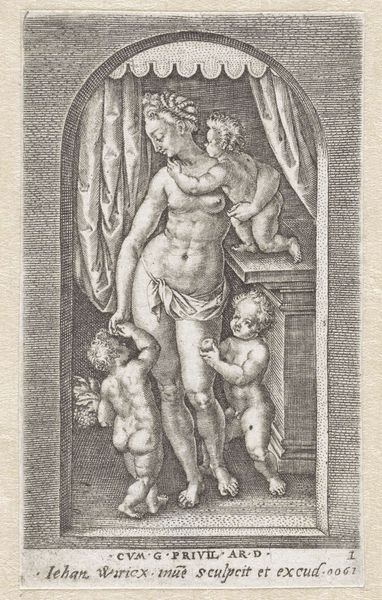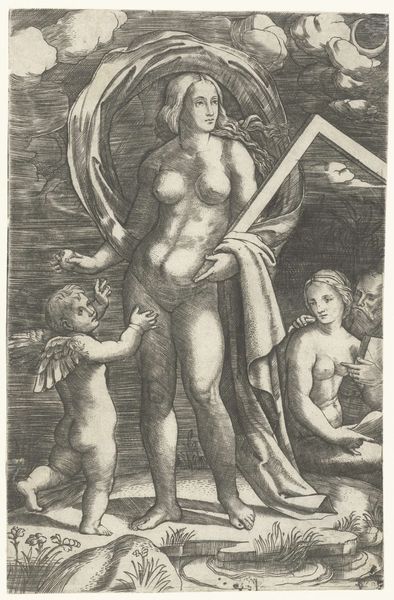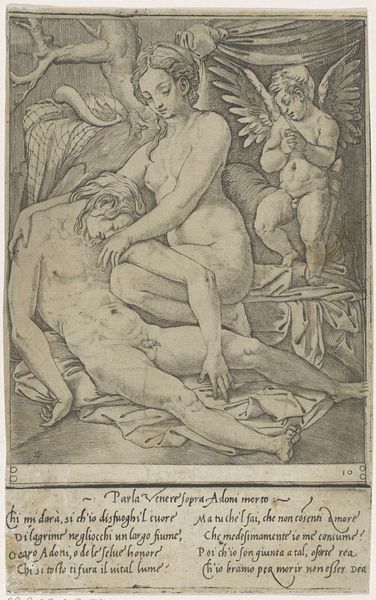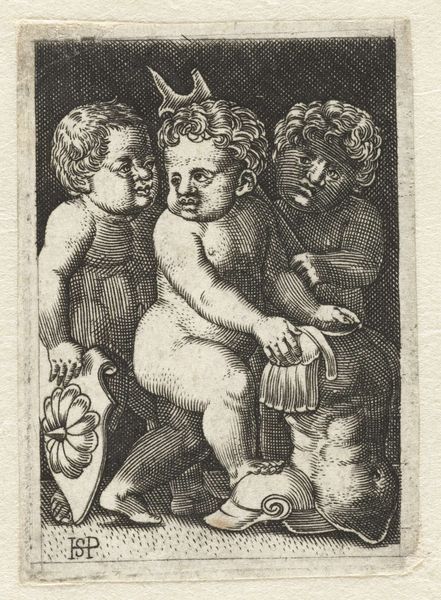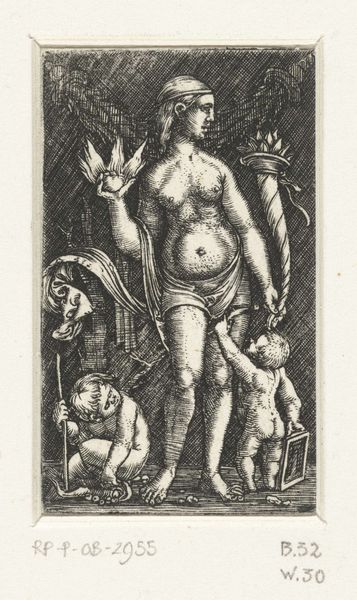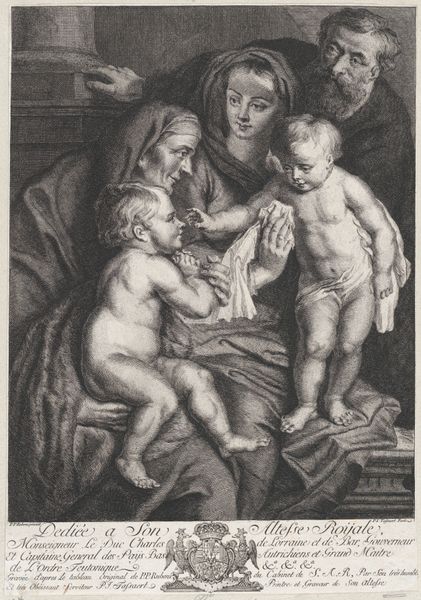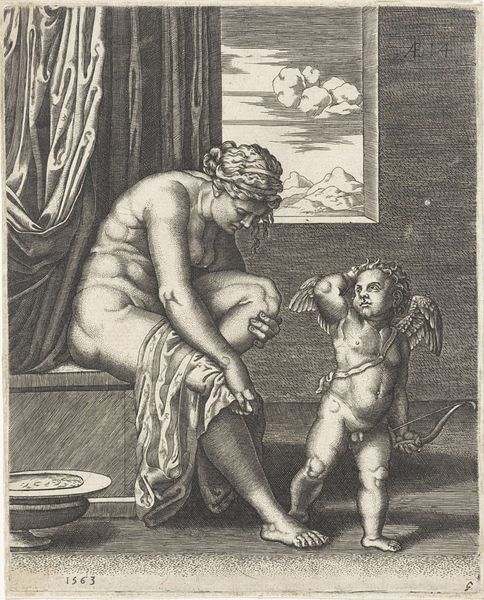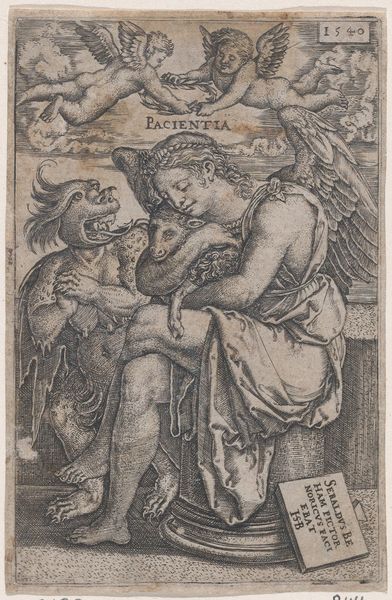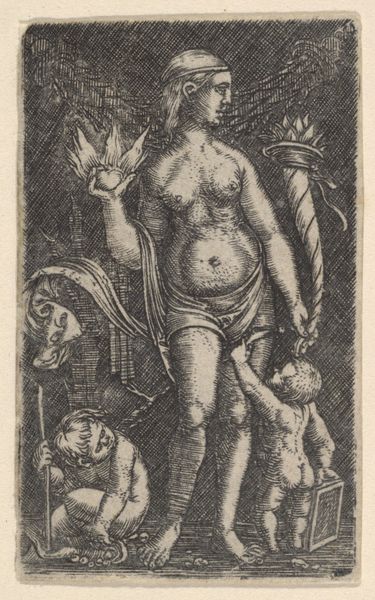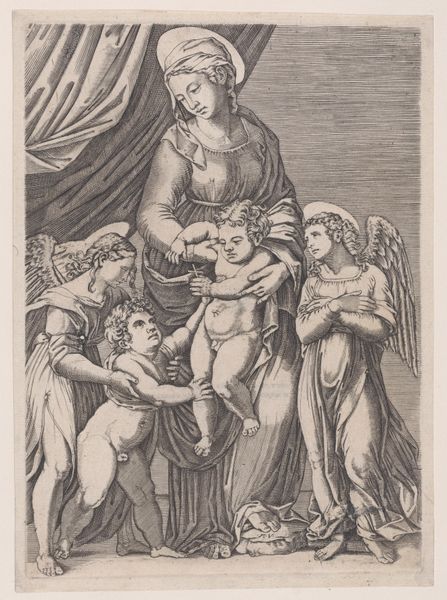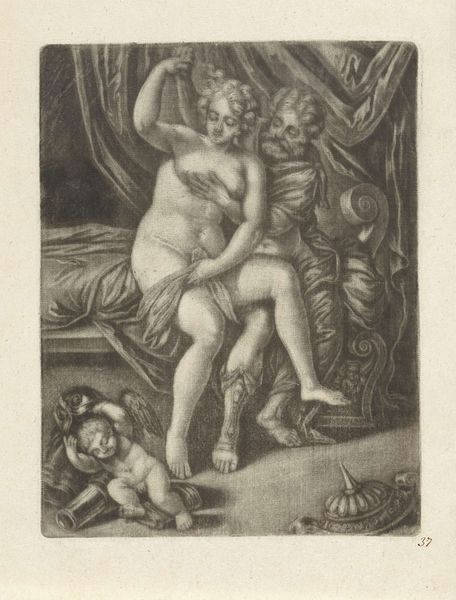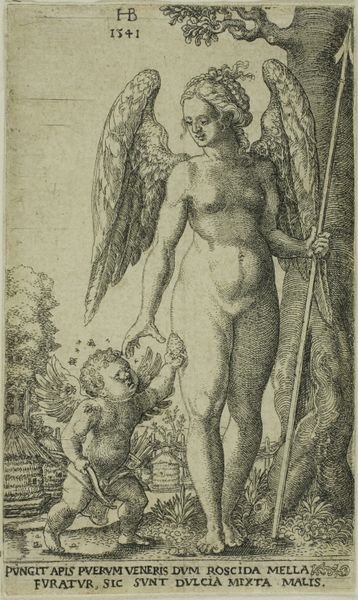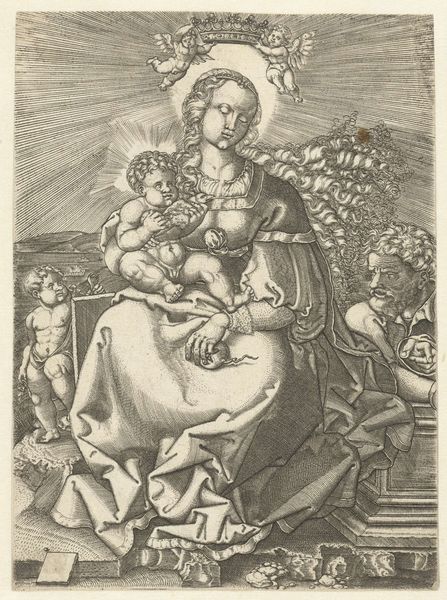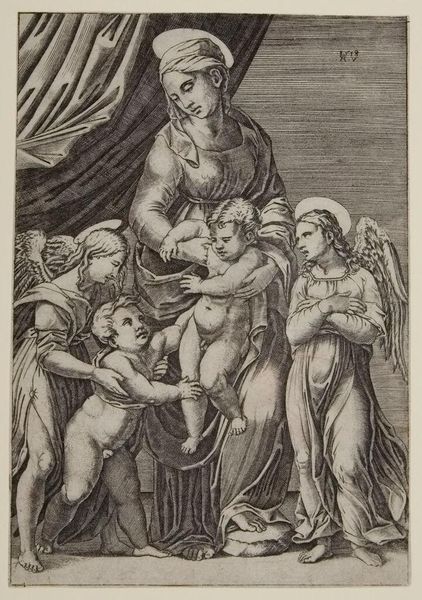
print, engraving
#
allegory
# print
#
old engraving style
#
figuration
#
history-painting
#
northern-renaissance
#
engraving
Dimensions: height 58 mm, width 43 mm
Copyright: Rijks Museum: Open Domain
Curator: Look at this fascinating engraving, “Liefde (Caritas)”, or “Love (Charity),” created sometime between 1510 and 1550 by Sebald Beham. It’s part of the Rijksmuseum's collection, a classic Northern Renaissance piece. Editor: It strikes me as somewhat unsettling. The textures created by the engraving process are fascinating, yet there’s something almost grotesque about the figures' proportions and expressions. Is that the intention? Curator: It reflects a particular understanding of allegory in the 16th century, channeling classical and religious tropes through a decidedly Northern lens. The central figure is Caritas, an allegorical personification of Charity, often depicted with children to symbolize love and nurturing. Beham uses figuration to communicate a very specific ideological position. Editor: I notice the strong contrast created by the engraved lines. They articulate form but also seem to highlight the physical labor involved. The paper itself, and the act of printing – that’s a very material reality underpinning the image. This isn't just about "love," but about the social and economic structures allowing the creation and consumption of this imagery. Curator: Absolutely. Consider the socio-political climate in which Beham was working. The Reformation was underway, deeply influencing how artists portrayed religious and secular subjects. He positions “Charity” not merely as an act of benevolence but as a virtue integral to societal structure. The virtue is bound up in very material conditions. Editor: And the way the children cling to Caritas. It is suggestive of dependence, perhaps vulnerability, and really complicates the concept of "charity". There is, perhaps unintentionally, a dark and uneasy tone that underscores the power dynamics in acts of giving and receiving, the way those exchanges form communities but also hierarchies. Curator: Indeed, Beham's portrayal prompts contemplation beyond conventional interpretations. It serves as a lens through which to examine broader narratives around gender, care, and societal expectations of women within historical power structures. Editor: This is much more complex than initially meets the eye. I appreciate understanding the depth of labor involved and the sociopolitical context.
Comments
No comments
Be the first to comment and join the conversation on the ultimate creative platform.
